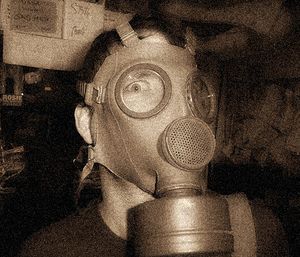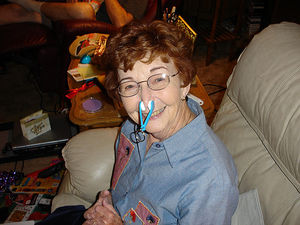Stench Continuum
The Stench Continuum is a framework created to sort out the olfactory powers of flatulence. It was named after the first flatulencologist Sir Anthony Stench.
History[edit | edit source]
Before the stench continuum was invented, only the statements of nose witnesses could be used for documenting and fighting olfactory disasters. In severe cases, these witnesses often were not approachable, so that the intensity of evaporation could not be determined afterward with the required accuracy. In 1882, the Royal Society therefore appointed Sir Anthony Stench to develop a standard for measurement of fetidness. The result, named Stench Continuum after its creator, quickly was accepted and used throughout the British Commonwealth. In 1902, after the Bremen Bean Eating Contest disaster, Germany was the first country in mainland Europe to adopt the standard.
In 1912, Sir Anthony Stench was awarded the Nobel Prize for Olfactories for his lifetime achievements. Today, he is widely acclaimed as the founder of the science of flatulence.
Classification[edit | edit source]
The nose-activating powers are classified into 13 intensity values in ascending order. The described effects are easy to identify for experts as well as amateurs, so that a well-defined classification is always possible.
| Olfactory power in stench |
Verbose description | Effects |
|---|---|---|
| 0 | odorless | Not observable olfactorily. |
| 1 | slight hint | Can be perceived as a light breeze from a small distance. |
| 2 | weak odor | Noses are wrinkled. |
| 3 | moderate odor | People turn their faces; speakers are irritated. |
| 4 | strong odour | Conversation is interrupted; disgust is expressed. |
| 5 | fart | Conversation is stopped abruptly; people fan air demonstratively. |
| 6 | strong fart | Weak people attempt to escape; burning eyes; occasional fits of dizziness. |
| 7 | intense fart | Frequent fits of dizziness and vertigo; weak people get breathing problems; increased nervousness in dogs and cats. |
| 8 | fetid fart | Nausea; stronger attempts to escape; general shortage of breath in enclosed rooms. |
| 9 | fetidness | Dogs howl; general shortage of breath even outdoors; single cases of unconsciousness. |
| 10 | massive fetidness | Windows are clouded; fire alarms set off; flowers wither; painfully burning eyes. |
| 11 | rotting fetidness | Panic in humans and animals; birds drop from the sky; epidemic nausea. |
| 12 | decay | Complete unconsciousness; wallpapers peel away from walls; lasting damage in flora and fauna. |
Legal aspects[edit | edit source]
- In many countries, Stench-10 class flatulence or higher is subject to registration with the local health authorities.
- Stench-7 class or higher can justify a layoff or a cancellation of a rental agreement if repeated or lasting for a longer period of time.
- Starting an open fire is prohibited in environments of Stench-8 or higher. In case of injuries or material damage, insurance will be canceled in such cases.
- Many public transport companies have included stench protection in their terms and conditions. In case of Stench-6 or higher and a remaining time of more than 2 minutes to the next stop, the offending passenger will be subject to a fine, depending on the stench value, the season, and outside temperature. In repeated cases the passenger can be ordered by a judge to keep a fart log.
Final notes[edit | edit source]
- The Stench Continuum can not be applied to a general bad atmosphere as it might pervade in classrooms or sweatshops.
See also[edit | edit source]
| This article is a translation of an original article of the German Uncyclopedia. If this sort of humour does not appeal to you, this might be intended, or lack of humour on your side, or (improbably) due to an imperfect translation. Cheers. |

